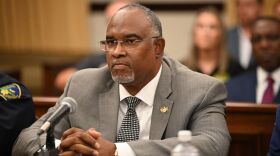You are not alone if you are confused about the VI Government’s fiscal condition. Every official statement about it contradicts one before. According to one official, GVI has been operating regularly with two to five days cash on hand – widely considered crisis level -- but according to another, there is no cause for concern. One official says revenues are up, another says they are down. Finance Commissioner says cashflow is his biggest challenge, Governor says government finances are strong and steady; then admits to a cash crisis. Senators seem just as perplexed.
GVI has had cashflow problems for donkey years. That is why negotiated wage increases were not honored, tax refunds were not refunded, and trash haulers and other vendors were not paid on time. That is also why its credit rating has been downgraded to “junk” status, and its access to credit restricted. Available evidence – direct and circumstantial -- place the GVI’s current cash position somewhere between critical and crisis. Representation to the contrary is just whistling past the graveyard.
The discordant messaging by government officials underscores a need for rigorous cashflow measuring and monitoring, to forewarn fiscal managers and policy makers of coming difficulties. The Government Finance Officers Association recommends that “governments perform ongoing cash forecasting to ensure that they have sufficient cash liquidity to meet disbursement requirements ….” GVI fiscal managers should formally adopt this practice. To paraphrase Prof. Peter F. Drucker: you can’t manage what you don’t measure.
A 36-month cashflow forecast – the recommended minimum forecasting horizon -- would have predicted that GVI, with limited borrowing capacity, would not be able to pay hundreds of millions in past due salary increases, tax refunds and vendor payments; provide hundreds of millions to match Federal grants; and finance about a billion dollars per year of General Fund appropriations; all from a COVID-ravaged economy. A cashflow forecast ought to be the basis for assuring the Legislature that “funds are available” to support appropriations.
For only cash can pay bills: not appropriations, not fund balances, and not allotments. An appropriation is legislative authorization to spend public money for a specified purpose; but it does not create cash. A fund balance is a financial accounting entity; it is not necessarily a cash balance. An allotment is OMB authorization to obligate the GVI to pay for goods and services; but OMB has no cash to give. Authorization to spend – legislative or administrative – does not provide cash to pay.
Cash comes directly from revenues or from debt to be repaid from revenues. GVI’s chronic cash deficiency results directly from chronic revenue deficiency. Audited financial statements of Governmental Funds* document multi-million-dollar revenue deficiency – revenues less than expenditures, also called deficit -- in 14 of the 15 fiscal years from 2007 through 2021 – the last audited year. The General Fund was revenue deficient in all 15 fiscal years. With access to debt limited by poor credit rating, GVI has been consistently short of operating cash. To fix its perennial cashflow problem the GVI must fix its perennial revenue deficiency – aka its structural deficit.
Revenues come from the economy -- via taxes, fees and charges for service. A 7.5% decline in the USVI economy from 2007 to 2021 was the main reason for the revenue deficiency. Battered by the Great Recession (2008), HOVENSA refinery closing (2012), twin category-5 hurricanes (2017) and COVID-19 pandemic (2020-2021), USVI nominal GDP declined from $4.8B in 2007 to $3.6B in 2014 -- losing a quarter of its value -- before inching back up to $4.4B in 2021. To fix the revenue deficiency problem, the GVI must restore and expand the USVI economy.
So, the solution to GVI’s perennial cashflow problem requires a multi-year fiscal recovery plan, primarily driven by revenue increase from economic growth. Expenditure reduction is a limited option. General Fund expenditures increased by 2% per year between 2007 and 2021; well below the 9.8% USVI inflation rate for 2022, reported by VI Bureau of Economic Research. By that measure, GVI expenditure growth has been reasonably restrained. Whether the public got enough benefit for the buck is a separate discussion.
Given the Legislature’s statutory responsibility for the public purse – its most powerful instrument of governance -- it behooves that Body to champion this effort.















